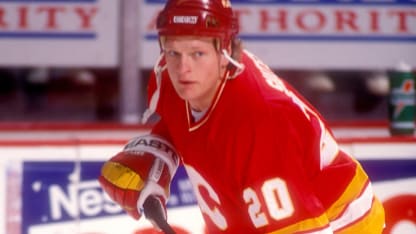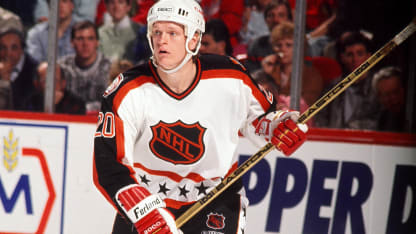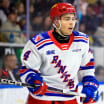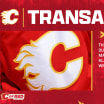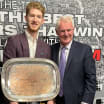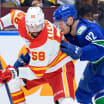"That whole year,'' he recalled, "was magical for me. I came to camp just hoping to make the team."
The fates were certainly Suter's on side. He had a head coach here, Badger Bob Johnson, who'd also made the NHL jump from the University of Wisconsin. And he joined a team that was re-tooling to take a run at the powerhouse up north.
Strong, swift on his skates with a powerful shot and enviable hockey IQ for someone so young, he fit in seamlessly.
"He created,'' said his first regular defence partner here, Neil Sheehy, "a dimension we didn't have. He could really skate. Hey, (Paul) Reinhart was skilled but he wasn't a skater.
"Sutes got the puck and he'd … go."
He and Al MacInnis were quickly installed as the point pair on the powerplay's No.-1 unit, and developed an uncanny allegiance.
In 1987-88, the Calgary PP hummed along at an astounding 28.1% efficiency, the 54-win/117-point/Stanley Cup of the following year, at 25.2%.
In the uncompromising Brad McCrimmon, who arrived in 1986, he found another ideal defence partner.
"(McCrimmon) meant a great deal to my career," acknowledged Suter. "He steadied my play. We just clicked. I was more offensive and he was rock-solid defensively. A great complement to my game.
"I played with (Chris) Chelios and MacInnis, too, but I ended up having my best career year with him as my partner. We just hit it off."
On April 4, 1986, he set a franchise record for points in a period, four, versus Edmonton (subsequently tied three times) and the next season strung together a Flames-best 16-game point-scoring streak (since equalled twice).
Unfortunately, with the big prize within reach, Suter would be injured for the both Calgary's runs to the final during his stay, suffering strained knee ligaments 10 games into the playoff push in '86 and then, even more cruelly, a broken jaw during Game 7 of the first-round series against Vancouver in '89.
Nevertheless, with the dynamism of his play and the numbers put up, he left his mark.
